I am connecting a signal source of 10kHz sine wave with a driver which is a voltage follower made by an OpAmp. The follower has one input and two identical outputs. One output is connected with a device(LOAD) to drive the device(LOAD); the other is connected with an oscilloscope for measuring.
The OpAmp used is ADA4610

simulate this circuit – Schematic created using CircuitLab
The first picture: Voltage follower is not connected with the device(LOAD) and its output signal is pure.

The second picture: Voltage follower is connected with the device(LOAD). It can be observed that there are harmonic noises showing up.

Updated observation:
- When I change the load to 1kOhm resistor, the output of OpAmp does not show any distortion.
- When actual load is used (around 50Ohm), distortion shows up.
- My suspect is that large output current could lead to distortion. However, I did not find related information in the datasheet.
My question is:
- Are the harmonics caused by reflection?
- Would very low frequency signals have reflection as well?
- How to export pure sine waves without distortion in this case?